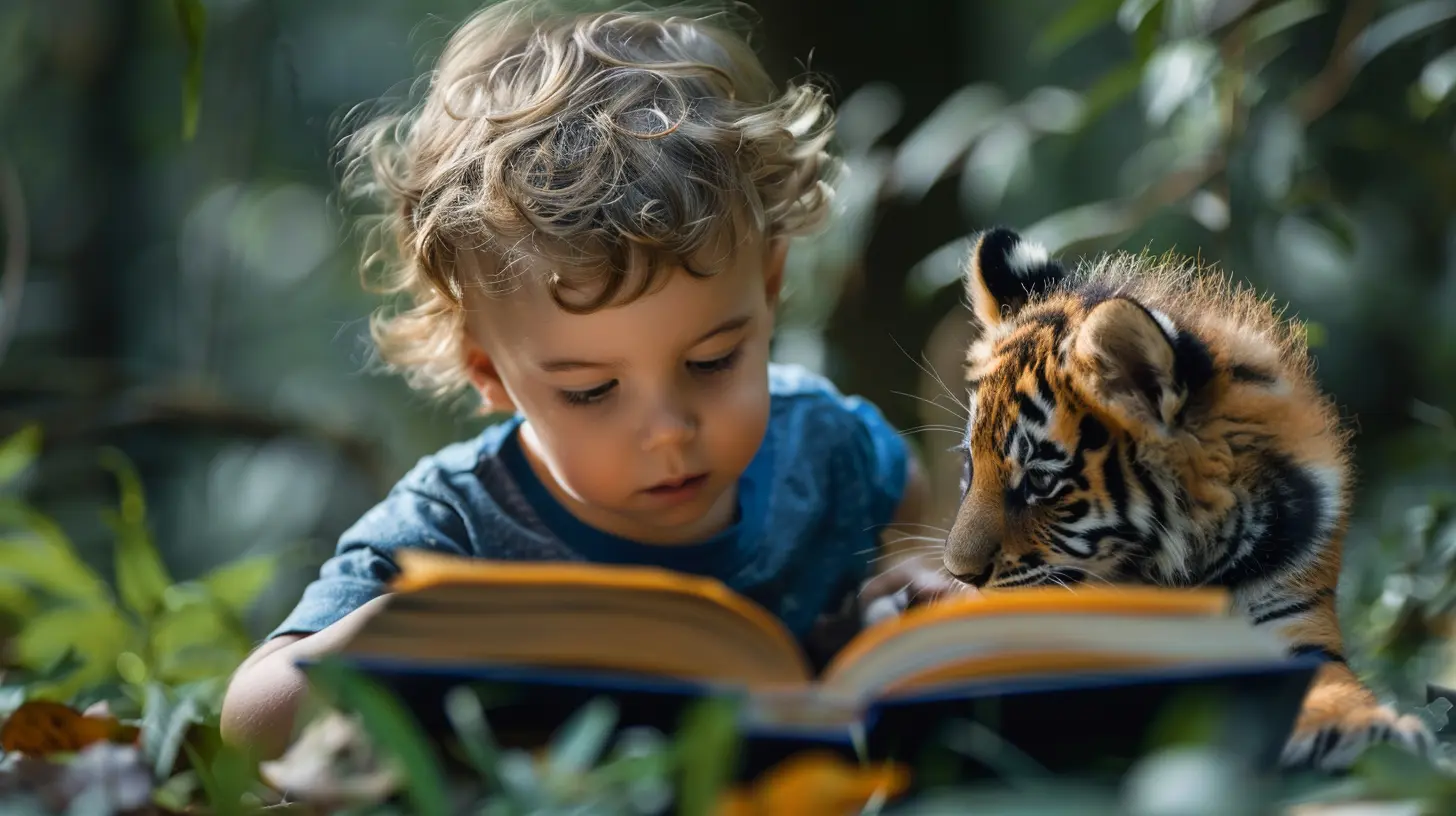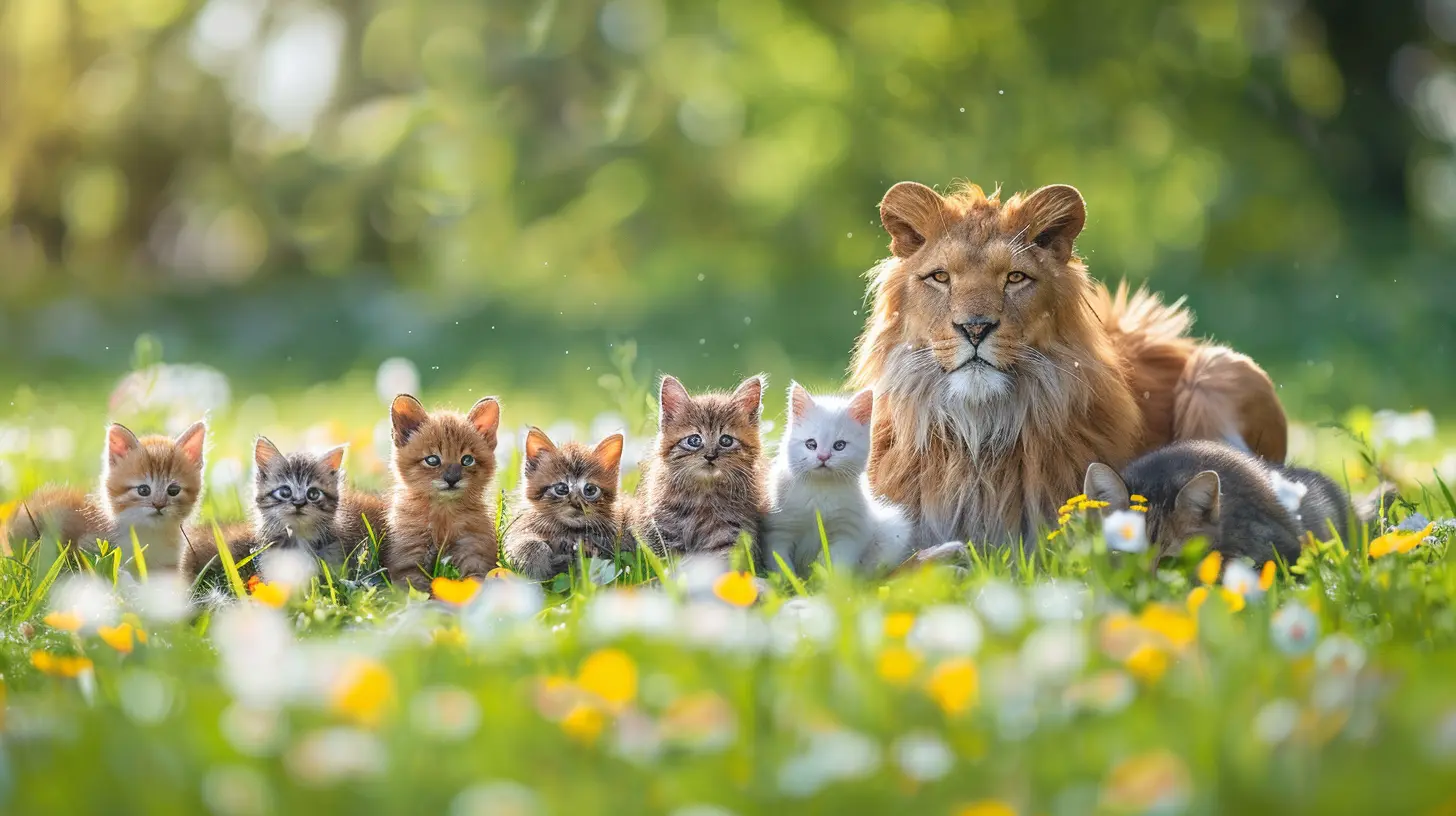Stories About Animals: Why Kids Love Them and What They Learn
11 July 2025
Children have an undeniable fascination with animals. From bedtime fables to animated movies, stories featuring animals captivate young minds like nothing else. But have you ever wondered why kids love them so much? And more importantly, what do they learn from these tales?
In this article, we’ll dive into the magic behind animal stories, uncover why they’re so appealing to children, and explore the valuable life lessons they teach.

Why Do Kids Love Stories About Animals?
1. Animals Spark Imagination
Animals in stories can talk, wear clothes, and go on thrilling adventures. This allows children to break free from the constraints of reality and explore a world where anything is possible. Imagine a sly fox outwitting a hungry wolf or a tiny mouse saving the day—these tales let kids dream big and embrace creativity.2. Animals Feel Safe and Friendly
Unlike human characters, animals don’t carry preconceived biases. Children aren’t intimidated by them, making it easier to form emotional connections. A talking bear or a wise old owl feels approachable, allowing kids to absorb the story’s message without fear or resistance.3. Relatable Characters Without Judgment
Animals in stories often struggle with problems kids can relate to—overcoming fears, making friends, or standing up to bullies. However, because they’re animals rather than humans, children feel less judged and more open to learning from their experiences.4. A Universal Language
Animal stories transcend cultures, languages, and backgrounds. Whether it’s Aesop’s fables or Indigenous folktales, animals serve as neutral yet powerful characters who teach universal truths that every child, no matter where they’re from, can understand and appreciate.
What Kids Learn From Stories About Animals
1. Empathy and Compassion
When children read about a lonely penguin searching for a friend or a lost puppy finding its way home, they experience emotions alongside the characters. These stories help kids put themselves in someone else’s (or some creature’s) shoes, fostering empathy and kindness.Real-life impact? Kids who grow up loving animal stories are often more compassionate—not just toward animals but also toward people.
2. Moral Lessons Without Preaching
Let’s be real—kids don’t like being lectured. But wrap a lesson in a compelling story, and suddenly, they’re all ears.Think of “The Tortoise and the Hare.” Instead of simply telling kids, “Slow and steady wins the race,” the story shows them through engaging characters and a memorable plot. Lessons about honesty, perseverance, kindness, and resilience all come alive in these tales without feeling forced.
3. Problem-Solving and Critical Thinking
Many animal stories feature characters who must solve problems—how to escape danger, find food, or work together with others. These narratives encourage kids to think critically and develop innovative solutions rather than giving up when faced with challenges.Take “The Three Little Pigs,” for instance. It teaches kids the value of preparation and hard work, as the smartest pig builds a house that the wolf can’t destroy. Who knew bricklaying could be so inspiring?
4. Respect for Nature and Wildlife
In today’s digital world, kids are increasingly disconnected from nature. Stories about animals help bridge this gap by nurturing an appreciation for wildlife and the environment.Books like The Jungle Book or Charlotte’s Web instill a love for nature and highlight the importance of caring for animals and ecosystems. A child who reads about the struggles of an endangered species may grow up to be more conscious of conservation efforts.
5. Courage and Bravery
Many animal protagonists face situations that require bravery—whether it’s a young lion learning to lead or a tiny ant proving strength isn’t about size. When kids read these stories, they internalize the message that courage isn’t about being fearless but about facing fears head-on.A great example? The Lion King. Simba’s journey teaches children that challenges will come, but bravery and perseverance can lead to greatness.
6. The Power of Friendship and Teamwork
Animal stories often highlight the importance of friendships and teamwork. Think about Finding Nemo—Marlin wouldn’t have found Nemo without Dory’s help, and their journey showcases the beauty of trusting and relying on others.This helps children understand that working together often leads to better outcomes than going it alone. And let’s face it, even adults need that reminder sometimes!

How to Use Animal Stories to Teach Life Lessons
Now that we know why kids love animal stories and what they learn, how can we, as parents, maximize their impact?1. Choose Stories That Resonate
Not all animal stories carry strong lessons. Choose ones that align with your child’s current stage in life. If they’re struggling with sharing, a story about a generous squirrel could do wonders. If they’re afraid of the dark, a tale about a brave little owl might help.2. Discuss the Story Together
Instead of closing the book and moving on, engage in a conversation. Ask questions like:- “Why do you think the fox helped the rabbit?”
- “What would you have done if you were the little mouse?”
- “How do you think the lion felt when he lost his home?”
These discussions help reinforce lessons and encourage critical thinking.
3. Bring Stories to Life
Make learning fun! Act out scenes, use stuffed animals, or even create your own animal story together. The more interactive the experience, the stronger the lessons will stick.4. Encourage Real-Life Applications
If your child learns about kindness through an animal story, find ways to apply it in real life. Volunteering at an animal shelter, feeding birds in the park, or simply being gentle with pets can reinforce these values.
Conclusion
Animal stories hold a special place in a child’s heart for a reason. They spark imagination, provide comfort, and teach some of life’s most valuable lessons—empathy, courage, teamwork, and resilience.As parents, we can harness the power of these stories to shape our children into kind, compassionate, and thoughtful individuals. So the next time your little one asks for one more bedtime story, remember—it’s more than just entertainment. It’s a lesson in disguise.
all images in this post were generated using AI tools
Category:
Childrens BooksAuthor:

Tara Henson
Discussion
rate this article
1 comments
Zorina McCollum
What a delightful read! Stories about animals capture kids' imaginations while teaching valuable lessons about empathy and friendship. Can't wait to share these insights with my little ones!
July 17, 2025 at 2:49 AM

Tara Henson
Thank you for your kind words! I'm thrilled you enjoyed it and hope your little ones find joy and valuable lessons in these stories too!


